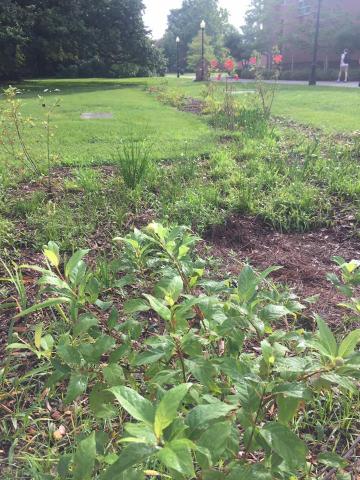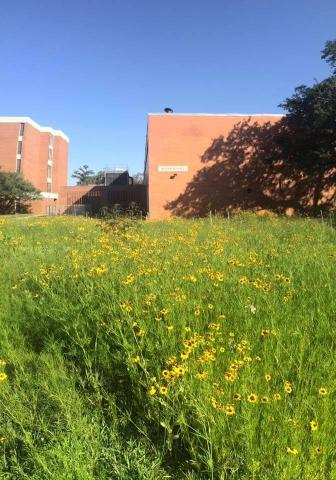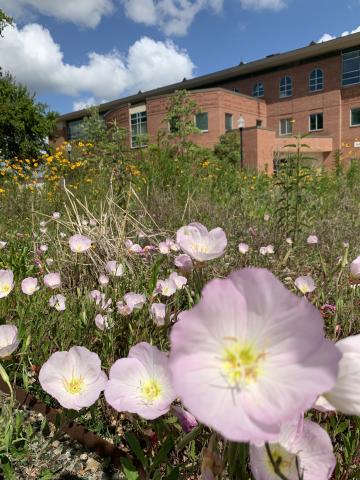Urban Cajun Prairie / Bioswale
Before After
Evolution of the Bioswale into a Cajun Prairie / Bioswale
 |
The bioswale, a green infrastructure intervention, was planted in 2016 and later expanded out to include a Urban Cajun Prairie in 2017. The bioswale is a sunken area of native plantings that collect stormwater runoff from roofs, streets, and sidewalks that are designed to slow down rainwater through a curving or linear path to a drain, while also allowing some of it to infiltrate the surrounding landscaping. |
 |
Expanded in 2017, the Cajun Prairie/Bioswale is a native habitat located in between Madison and Girard that surrounds the exisitng bioswale which improves stormwater management capacity of an area that used to be turf grass. It also increases biodiversity on campus. The historic Cajun Prairie encompassed over 2.5 million acres in Louisiana and Texas, and supported a highly diverse community of plants, wildlife, and pollinating insects. Decades of agricultural and industrial practices, urbanization, and land development have nearly eliminated the ecosystem, with less than 0.01 percent remaining today. |
 |
Today the Cajun Prairie/ Bioswale is used by biology classes and others to study plant and insect species. The diversity created by this habitat is noticeable by its sound -- you can hear it buzzing! The Cajun Prairie/Bioswale is constantly changing and evolving every semester. UL Lafayette is proud to be a Bee Campus USA university and this is our largest pollinator habitat on main campus. |
